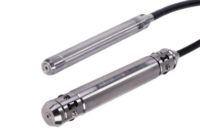Olympus NORTEC® 600D Heat Exchanger Tubing Inspection Kit

Highly portable and simple to use, the new NORTEC 600D heat exchanger inspection kit enables a single user to inspect ferrous, non-ferrous, finned and un-finned tubing with a system that is easy to use and requires minimal training.
This new kit based on the 3.7-pound (1.7 kg) NORTEC 600 eddy current flaw detector offers a convenient alternative to inspections that rely on larger, heavier equipment. Now, users can quickly detect corrosion, pitting, cracks, wear and erosion in various types of exchangers, including:
- HVAC
- Condensers and evaporators
- Feedwater heaters
- Carbon steel or ferromagnetic tubing heat exchangers
- Nonferromagnetic tubing exchangers
The kit utilizes the field-proven NORTEC 600D flaw detector and has all the features necessary for inspectors to do their jobs. The instrument is easy to place anywhere in the work environment; the stand can serve as a carry handle, hook or support. The rechargeable battery keeps the flaw detector working for a full 10 hours and swapping batteries takes only seconds. With an intuitive, simple interface and presets for each application, users can learn the system in a matter of hours and easily adjust parameters to quickly obtain ready signals and do their jobs faster. The instrument’s automatic mixing capabilities are used to detect defects located close to supports. To measure the depth of defects, real-time phase and amplitude readings help users be confident in their assessment without having to draw reference angle marks on the screen.
The other component of this inspection solution is a new tube probe adaptor kit that enables operators to continue using their existing MS5800 probes while providing hands-free functionality. The kit features adaptors for eddy current (ECT) probes (regular bobbin probes and air conditioner probes), remote field (RFT) probes (single and dual exciter), and near field (NFT) probes. Most competitive eddy current bobbin probes with a 4-pin Amphenol® connector are also compatible. The kit can also read tube probe signals in either differential or absolute mode, making it easier for users to detect tubing service defects, such as corrosion, localized pitting, wear, and, in some cases, cracks.
Olympus
Looking for a reprint of this article?
From high-res PDFs to custom plaques, order your copy today!








